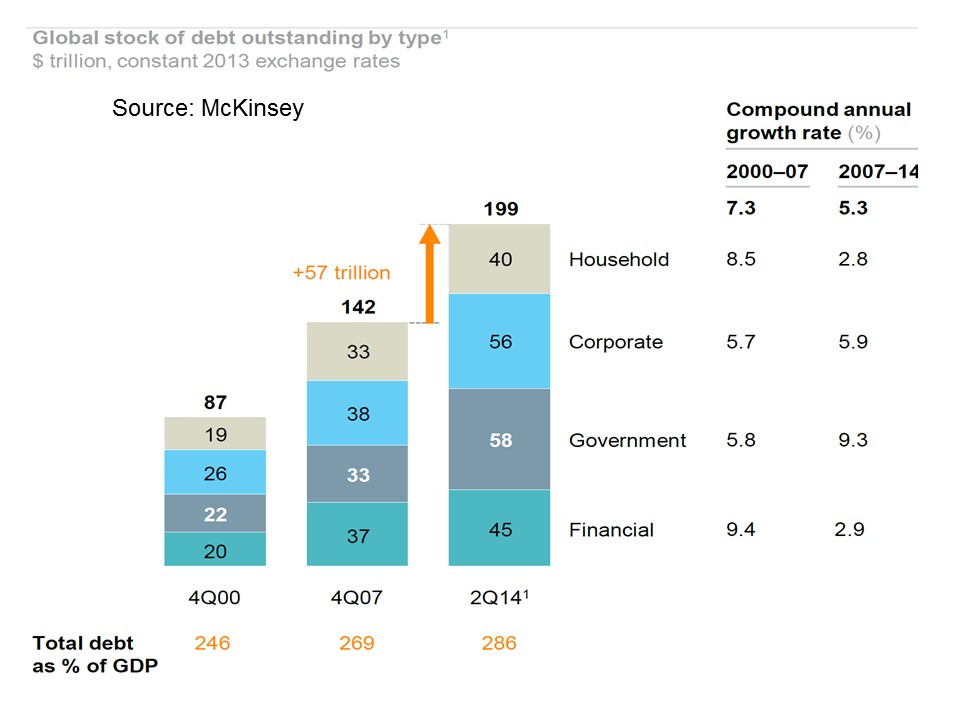Those unfamiliar with the fine detail of derivatives pricing, regulatory capital, and accounting may have been surprised by Warren Buffet’s 2002 observation that derivatives are “the financial weapons of mass destruction”.
Further evidence of the great sage’s wisdom emerges in the Dec 8th edition of The Times. Neel Kashkari, the 35 year old banker picked by US Treasury Secretary Hank Paulson to “design” the US bailout called TARP (Troubled Asset Relief Plan) admits how the figure $700 billion was arrived at:
We have $11 trillion residential mortgages, $3 trillion commercial mortgages. Total $14 trillion. Five per cent of that is $700 billion. A nice round number.
This detail is revealing. 5% is the flip side of 95%. What is the significance of this? 95% is the magic number which has driven the enormous growth of the unfunded derivatives market. The term ‘unfunded’ is important, since the regulators had always felt comfortable in designing rules for funded assets (commonly known as loans). That task was deemed relatively easy and banks have been required to allocate 8% of capital reserves to back up their loan books.
However, unfunded exposures under swaps, forwards, options and so forth collectively known as “derivative” transactions were more difficult to analyse and control. As a result, the derivatives industry had boomed since its inception in the early 1980’s primarily on the back of remarkably generous regulatory and accounting treatment. The starting point for regulatory capital is 0.5% of “exposure”, or 1/16th of the base requirement for funded assets. For long term transactions this 0.5% figure may be augmented by the addition of reserved profit.
I must admit that this expression – reserving the profit – always struck me as the wrong way around. How would the government’s regulator of water companies react if the water industry sought to prepare new balance sheets showing today’s capital base substantially increased by the reservation of future years’ profits, then reduced back to a still inflated figure by the deduction of a portion of this reserve “for conservatism”?
Encouraged by the banks’ own pricing experts, the regulators have accepted the use of historical data analysis as the basis of the rules they established to measure the capital requirement for any risk position on a bank’s derivative book.
The mapping of these historic data observations on bell shaped normal distribution charts is at the root of accounting and regulatory capital rules for derivatives, none of which have been changed as a result of the collapse of the banking system. These charts drive pricing models and internal risk controls. Bank traders use the models to place a value on each such exposure, generally ignoring outcomes that would be outside two standard deviations from the historical norm. ‘Two standard deviations’ simply expressed, covers 95% of the outcomes.
Although regulators require investment grade banks to capitalise for risk measured beyond the 95th percentile, the 95% test is applied extensively as a ‘practical’ benchmark. If a deal ‘works’ at 95% it is generally done. If it continues to satisfy this test year after year, relevant time based portions of the profit ‘reserved’ (ie not taken into profit and loss account at inception) will be recognised.
This use of these charts always struck me as questionable on two counts:
a) Excessive reliance on historical outcomes as a predictor of the future;
b) The confirmation bias present in the mapping of the data.
Traders and transaction specialists both outnumber and are paid far more than their internal and external regulators. The internal regulators control profits and bonuses. Put simply, if the pricing or capital cost outcome of the model inputs does not fit the price on offer for the trade, the data can be re-analysed and mapped again more conveniently. This point is of particular note in ‘exotic’ derivatives territory; transactions whose subject matter is less commonly priced in the money, bond, or commodity markets. Examples such as weather, human mortality, or corporate credit defaults come to mind.
Even senior bankers unfamiliar with minutiae of derivatives calculations are aware of the significance of the 95% benchmark. So here we see the intuitive appeal of Kashkari’s sizing of the US TARP bailout – he filled the 5% confidence gap.

